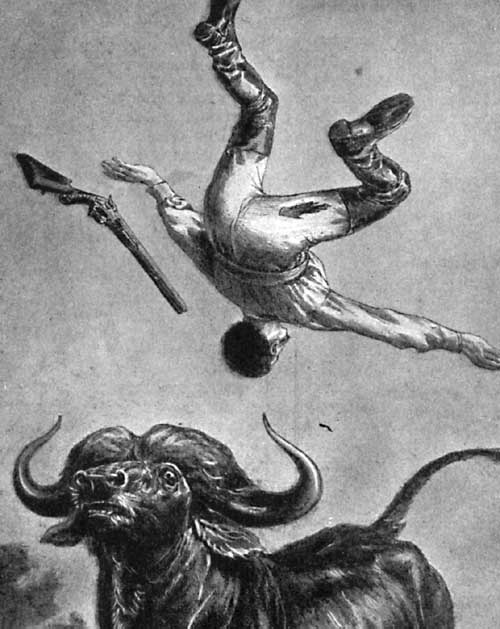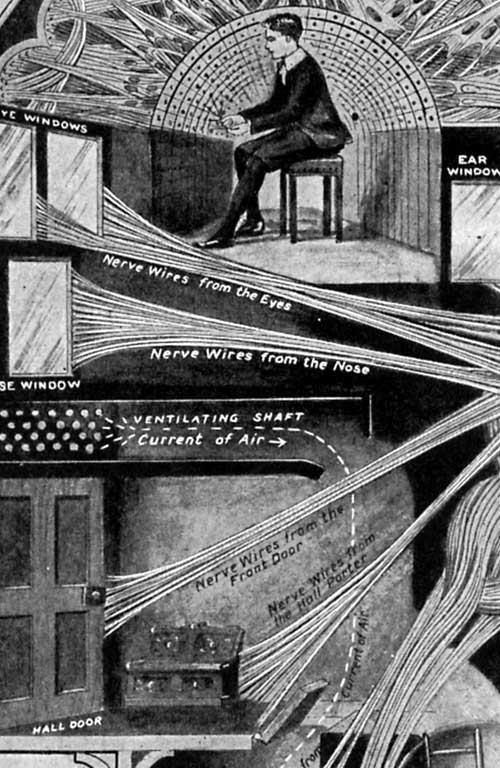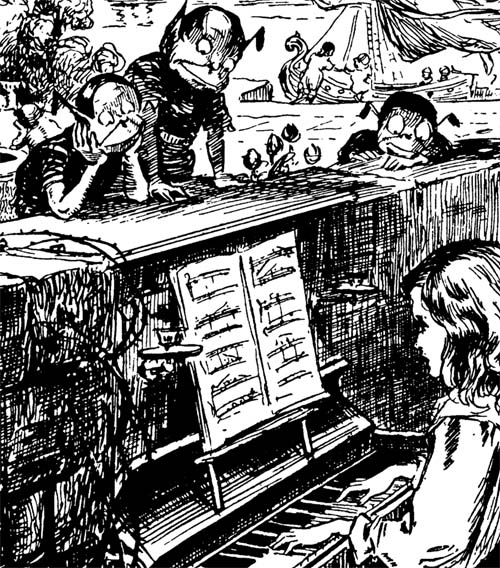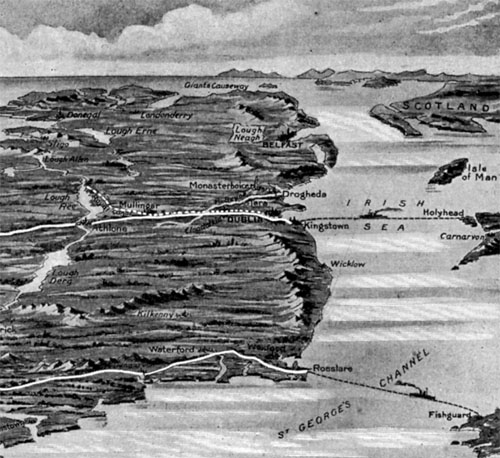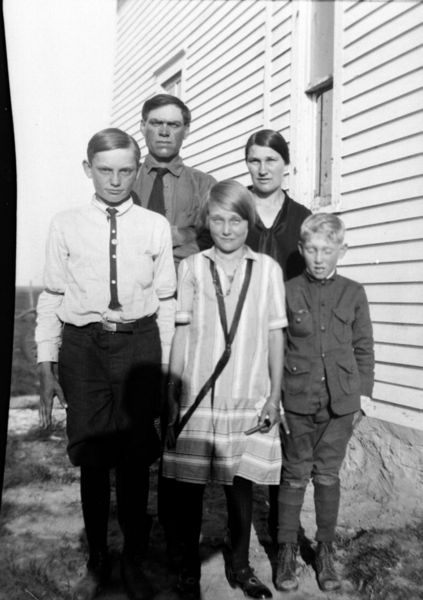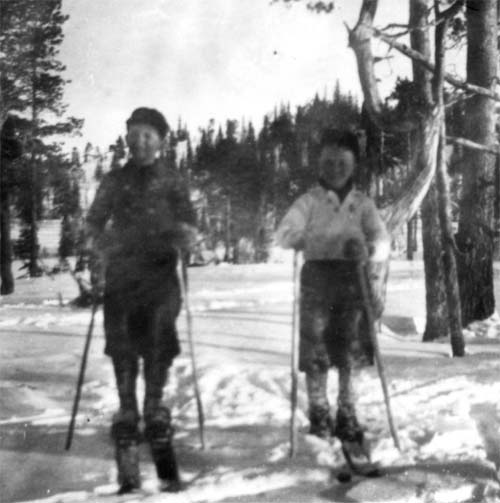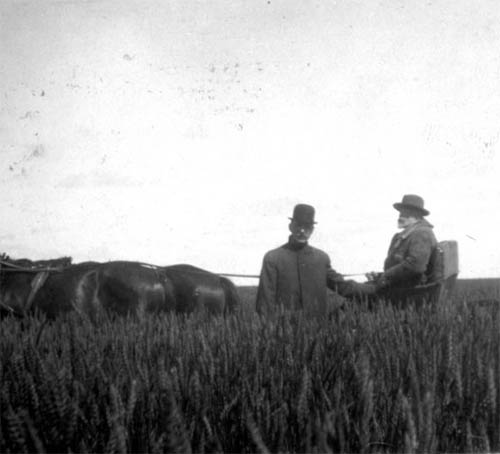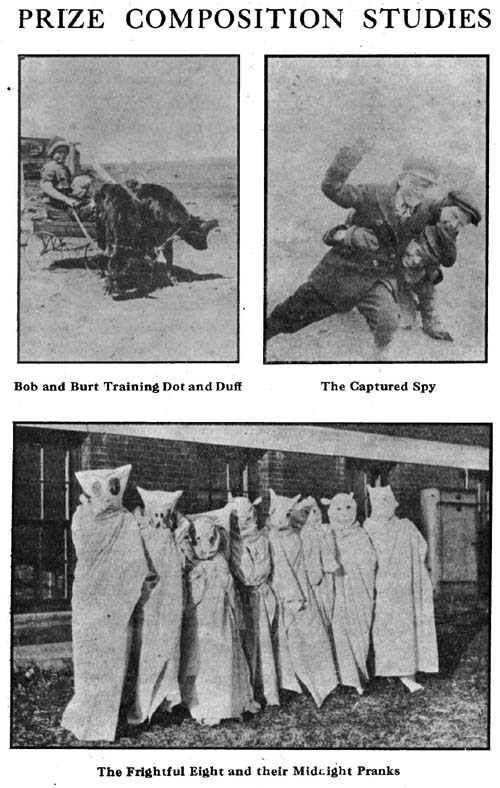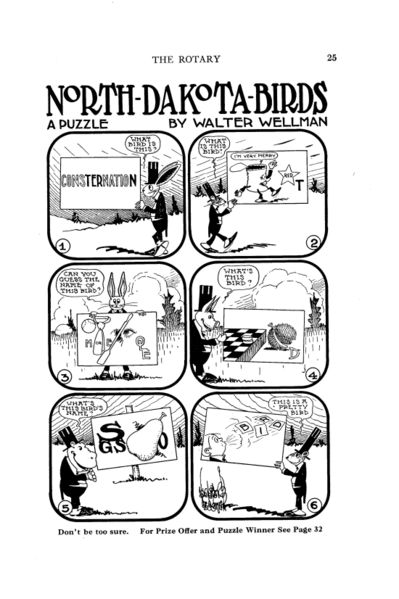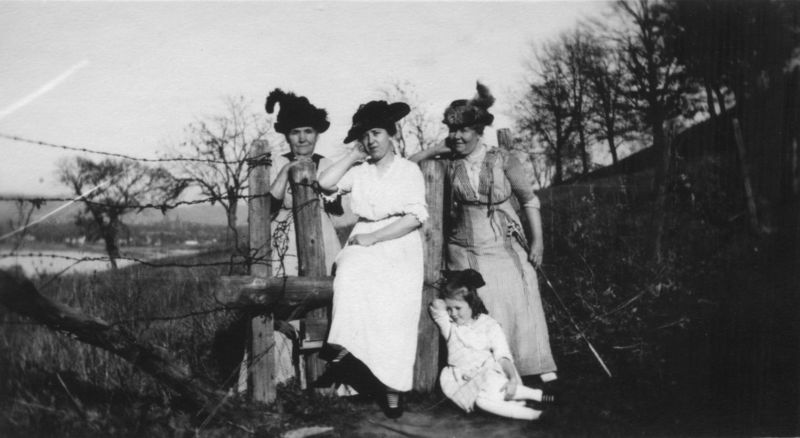 |

| |
|
|  |
Bemidji At Night, 1916.
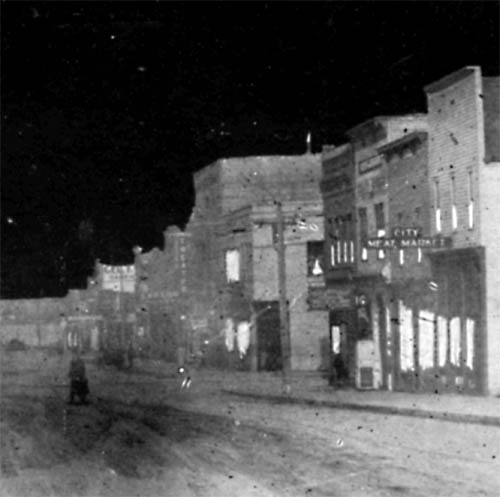
Click for full image Bemidji, Minnesota: home of Paul Bunyan and Babe the Blue Ox, but the giant pair were still twenty years away when this postcard was mailed in 1916. In the 1910s, it was still a community on the grow, trying to develop roads and railroad access. A new depot was built a few years earlier than when this postcard was mailed and railway passengers were probably one of the main customers of such mementos of midwest travels. Cameras of the time were not particularly efficient at night, so this photo was probably a daytime photo that was underexposed and colored to make it look like 'night'. In the 1910s, Either Third street has changed significantly, or the view is from a different spot: Google Maps doesn't help. Labels: 1910s, 1916, bemidji, minnesota history, postcard
Meeting With A Buffalo, 1910s.
Jack's Wonderful House, 1910s.
Submarine Point-Of-View, 1910s.
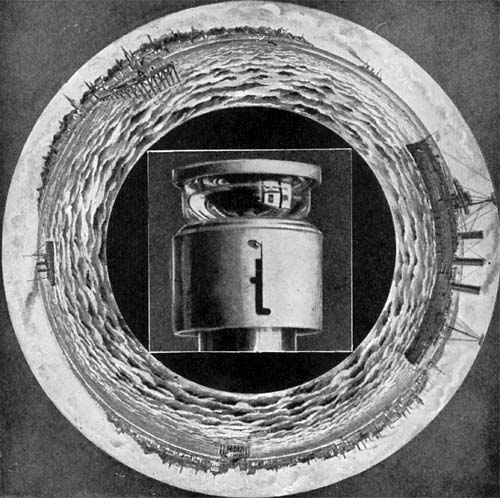
Click for full image My impression of a submarine's visual acuity was similar to a telescope: Square-jawed 1950s movie stars peering into a binocular-like apparatus suspended from the ceiling, ordering torpedoes to be fired. During and prior to WWI, submarines were just coming into their own, and would soon be the secret weapon to turn a war's direction. The periscope, according to the image above, operated quite differently than my memories of mid-20th-century naval war movies. A bowl-shaped mirror was lifted, at the top of a tube, above the surface of the ocean. It reflected light down the viewing tube, projecting it, a'la camera obscura, on to a white tabletop for review by the captain and his officers. The bowl-shape projects the distended, distorted view seen in the image above. While this afforded an instant, at-a-glance view of the submarine's surroundings, it did not provide the rangefinding, weapon-aiming, or navigation facilities that a modern sub enjoys. From The Book of Knowledge, published in the 1910s. Labels: 1910s, periscope, submarine, the book of knowledge
Forests, Deserts, and Prairies, 1910s.
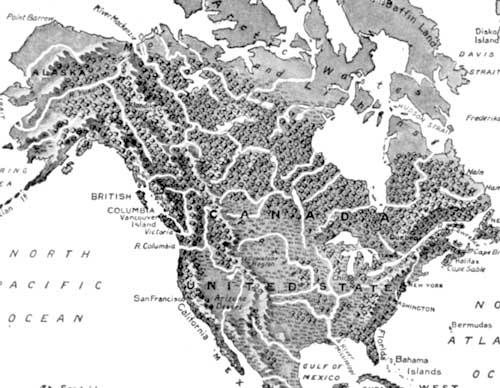
Click for full image From The Children's Encyclopedia, published in the 1910s, and designed by "G.F. Morrell". This illustrated map, ignoring political boundaries and man-made roads or railways, is pieced together from several smaller maps, depicting the various environments of the world. The caption of the maps engages in some scare-mongering, comparing the expanding deserts as proof our planet is moving towards being as arid as the moon, but it also describes deforestation as "a disastrous thing for a country," recognizing that removal of trees and grasses can result in loss of topsoil and a collapse of the food-creating industries. Labels: 1910s, environmentalism, illustration, maps, the children's encyclopedia
Steam-Powered Space-Ships, 1918.
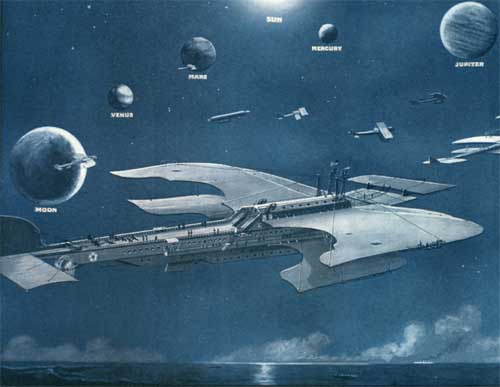
Click for full image If these amazing craft could actually reach the impressive speed of two miles per minute (120mph), how long would it take to reach the sun? Over fifty years, or so says the margin notes in the original. I have never seen such a wonderful portmanteau of craft-shapes compiled into a single speculative spacecraft: the body is like that of a steamship, front-weighted like an airplane, with airelons and control surfaces both fore (like the Wright flyer) and aft (like most airplanes) — and not only did the artist theorize a single spacefaring airship, he or she put together several designs of varying shape, including a space-faring zeppelin in the distance. It also appears that the "wing-like" surfaces were not functional, as you'd expect for a spacecraft: if you look closely, there are observation decks and tiny people at the edges. My use of the word "Steam-powered" is purely an assumption based on the time period; the features that look like smokestacks are supports for the wings; I cannot see any outward evidence of the ship's power source. Based on calculations of time-periods, this was published around 1918 or 1919, so I assume the painting was done shortly before. ( Want wallpaper of this image? here's normal and widescreen.) From Our Wonder World.Labels: 1910s, 1918, airship, space flight, steampunk
The Beautiful Land of Sound, 1900s.
Orthographic Ireland, 1910s.
Cross-Country Skiing Boys, 1910s.
King Gustav Vasastenen, 1910s.
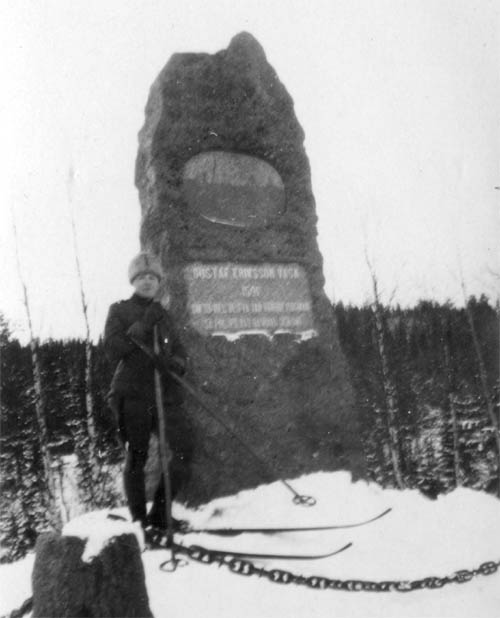
Click for full imageThis monument seen above marks the spot where two village messengers caught up with the fleeing Gustaf Eriksson Vasa, next in line for the throne of Sweden...next in line because the king of Denmark has the rest of Sweden's royalty executed in what is known as the Stolkholm Bloodbath. Gustaf had skiied to Dalarna to try and raise an army, but the locals were hesitant. The Danish army was close behind, so Gustaf left without a positive answer, headed for the safety of Norway. The residents of Dalarna soon changed their minds to conspire with Gustaf, and sent out two swift skiiers to catch the future king of Sweden to let him know they would support his rebellion. That wilderness meeting, marked by the 'Vasastanen' above, is also the premise for the Vasaloppet, a cross-country skiing event held in Dalarna, whose 2009 events begin today. The photo appears to have been taken in the 1910s, possibly earlier. Labels: 1910s, king Gustav I, rebellion, vasaloppet
Standing In The Field, February 1912.
Prize Composition Studies, 1917.
Prince of Persia, 1909.
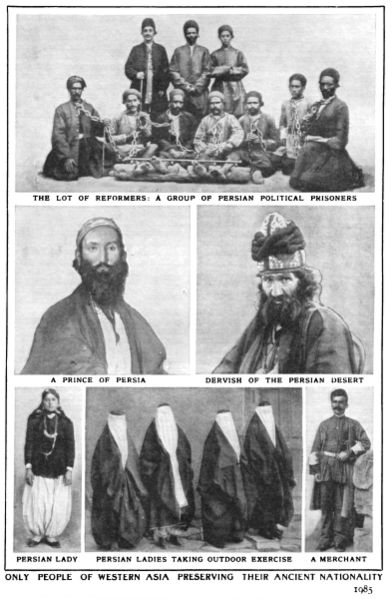 Portraits from Persia, early 1900s, around 1910. The images are somewhat related to an entry in The Book of History describing Persia (also called Iran in the article) up until the exile of the Shah and the division of their land between England and Russia. The article ends with the ominous claim that the treaty resulted in the end of an independent nation of Persia. Iran, however, grew from the remains; however, their more rural and less progressive residents have not changed much from these pictures a century ago. The article does not explain what the 'political prisoners' were in chains for, although it vaguely hints at 'reformers' who were instrumental in deposing of the Shah. Labels: 1910s, asia, iran, islam, persia
St. Moritz, Switzerland, 1914.
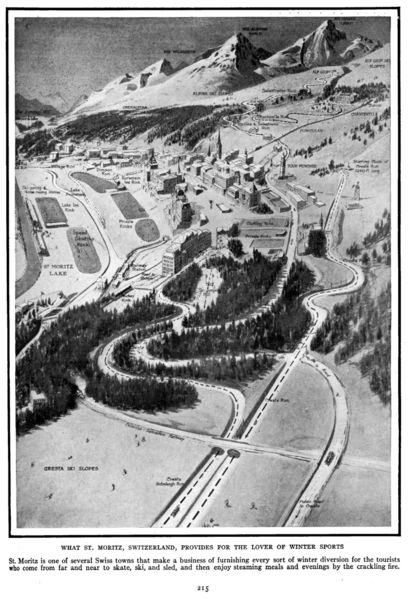 St Moritz remains a " cradle of winter tourism," as it was nearly a century ago. According to the caption, St Moritz " is one of several swiss towns that make a business of furnishing every sort of winter diversion for the tourists who come from far and near to skate, ski, sled, and then enjoy steaming meals and evenings by the crackling fire." From the encyclopedia "Our Wonderful World". Labels: 1910s, 1914, map, sports, st moritz, switzerland, winter
Helene, Ruthie, and Mother Dear, 1916.
 Helene, Ruthie Barton, and "Mother Dear," 1916. According to the back of the photo, Ruthie Barton is from Des Moines, Iowa. Labels: 1910s, 1916, helene, outdoors
Armistice Day, 1910s.
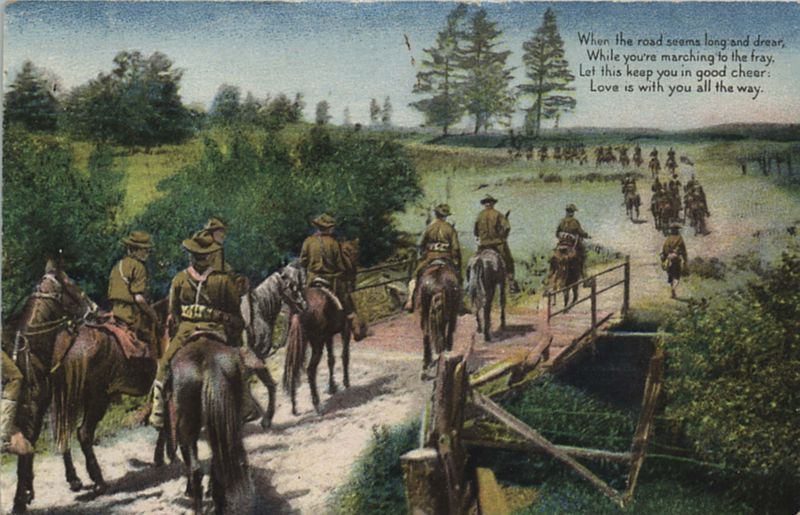 Today is Armistice Day, commemorating November 11, 1911. It first was just a celebration of the end of the largest war the world had ever seen, but as time passed and we saw that, no, wars could get much, much worse, the day was changed to Veteran's Day, honoring those who fought in those wars. Labels: 1910s, armistice day, soldiers, veterans day, WWI
The Linotype Machine, 1915.
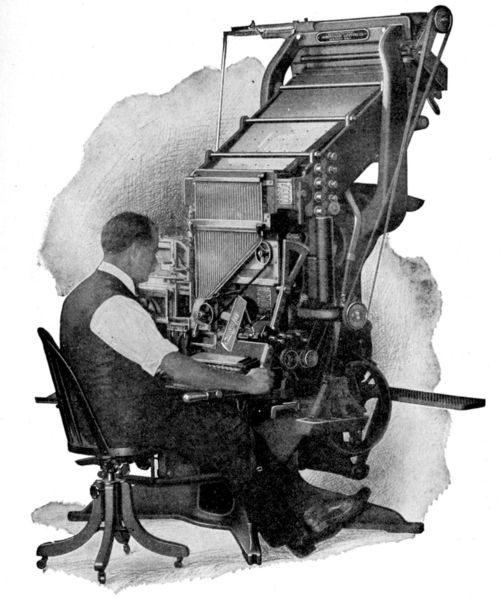 Above is the proto-blogger: a Linotype compositor. From the days of Gutenberg, publishing had been completed by assembling tiny chunks of metal with embossed letters on the top edge. The Linotype machine simplified the process by casting those metal letters in entire lines at a time, by means of a keyboard, ready to go to the press. I've seen these amazing machines in operation first-hand, and have several text 'slugs' around here, some with my and my kids' names on them. The machines are completely mechanical, produce an amazing amount of text in a very short amount of time, and later versions (they were used well into the late 20th century) even had the ability to operate unmanned, receiving instructions via the news-wires. Unlike blogging compositors today, due to their size and expense Linotype machines rarely made it to the ranks of amateur publishers, but did help move the ability to composite type from the hands of skilled master typesetters to anybody that could be trained to use the keyboard. If you'd like an overview of how these amazing machines worked, you can see a section from an article in The Book Of Wonders.Labels: 1910s, 1915, linotype, typesetting
Miss Sarah Thompson, 1910s.
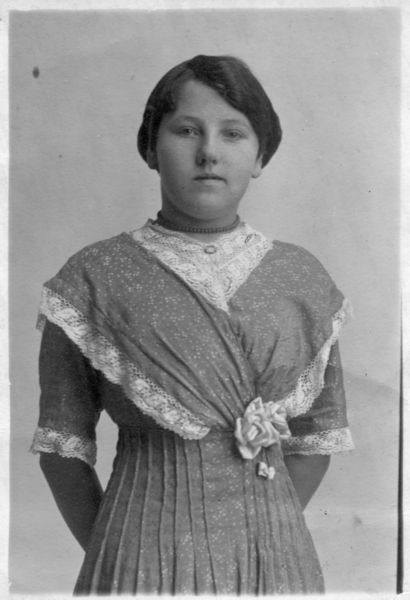 Back of real-photo postcard, with one handwritten line of text: Miss Sarah Thompson. Divided back and style indicates 1910s. Labels: 1910s, photo postcard, portrait, women
Build Your Own Magic Lantern, 1910s
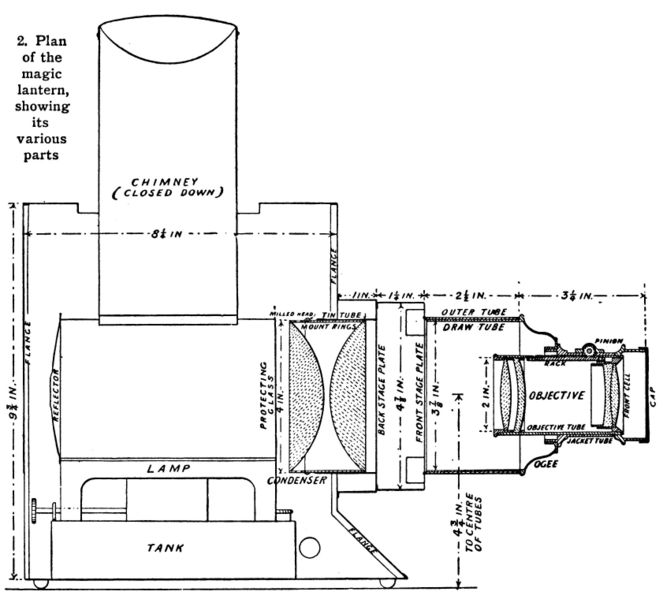 From the encyclopedic series The Book Of Knowledge comes this bit of practical information: " How To Build A Magic Lantern". These are what we'd call today a "slide projector". At the time, however, slides were images on largish pieces of glass, and the light source was an open flame. The instructions rely on store-bought lenses, but the body is completely manufactured by hand from materials such as brass, japanned tin, and wood. If the steampunks among you are interested in building a paraffin-powered LCD projector, this is a starting point. Labels: 1910s, do-it-yourself, magic lantern, steampunk
Helene, Mother Dear, and Friends, 1916
Peek-a-Boo!
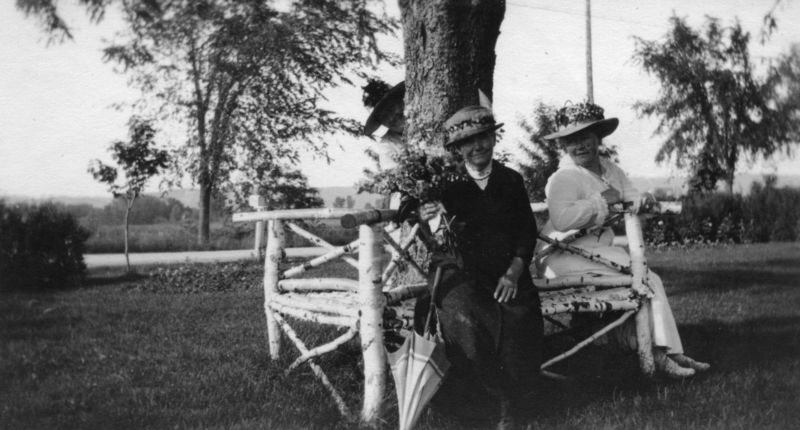 Who's that behind the tree? Why, it's Mrs. Pfeiffer! Helene and her mother visited a nursery for a fine day outside, and that rapscallious Mrs. Pfeiffer brought levity to their day by composing very difficult riddles and singing scandalous bar-room tunes she learned from a set of Victrola records her husband borrowed from the Lodge and hid under his humidor. Or so I gather from two photos taken a hundred years ago -- I may be reading a bit too much into it. I also enjoy this photo for the excellent white-birch bench surrounding the tree. The arm-rests are arranged as an 'x', allowing open seating on all sides. I can't see how it's fastened together, but it seems sturdy enough -- as a bench in a nursery, the raw-woo, bark and all, has a great beauty to partake, when walking through the gardens with your mother and that pernacious Mrs. Pfeiffer. Labels: 1910s, 1917, fashion, gardens, minnesota, nursery
Helene's Swamped Canoe
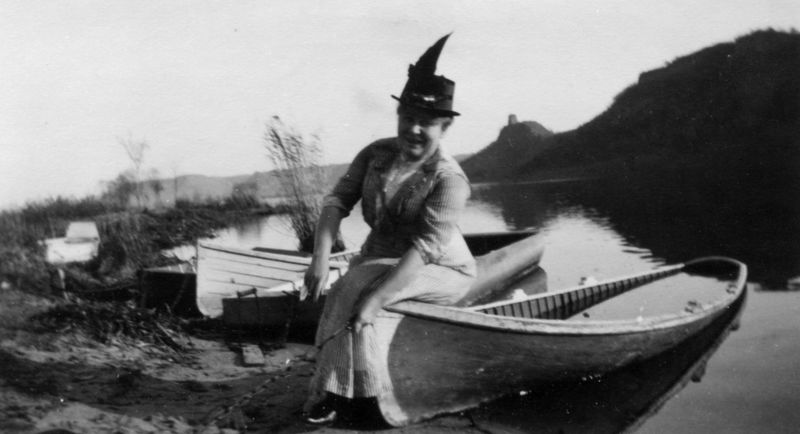 Don't look now, Helene, but your fishing excursion isn't going to get very far. Helene sent a copy of this photo to Marie ( along with several others), probably because Marie was along on this girls-day-out. It's sure good she's near shore, though; unswamping a canoe in a long dress and snazzy hat would be quite difficult. Helene doesn't appear too nonplussed -- she's got a few other canoes behind her to pick from. Labels: 1910s, 1916, canoe, lake, minnesota
Three Gents in Snappy Hats
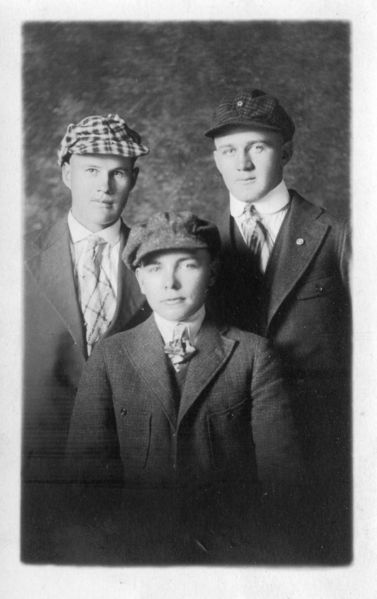 What's these guys' stories? Sometime in the 1910s, maybe twenties, three lads got together for a group shot -- and it must've been important that they be wearing hats. The style of hat is called a 'newsboy', 'Gatsby' hat, or driving cap, and was popular with the trendy kids of the early 20th century. The button-close breast pockets on the two gents on the right has a very military feel to it, and echoes the late 19th century. The lad on the left shops at a different tailor: sans vest, modern shirtcollar, his collar is lower, wider below the collar on the notched lapel, and is missing the breast pockets. Maybe he's older, and doesn't rely on Mom to do his clothes-shopping. Any which way, they're a sharp looking group of guys. Labels: 1910s, antique photo, clothing, men, suit
|  |
|
|












